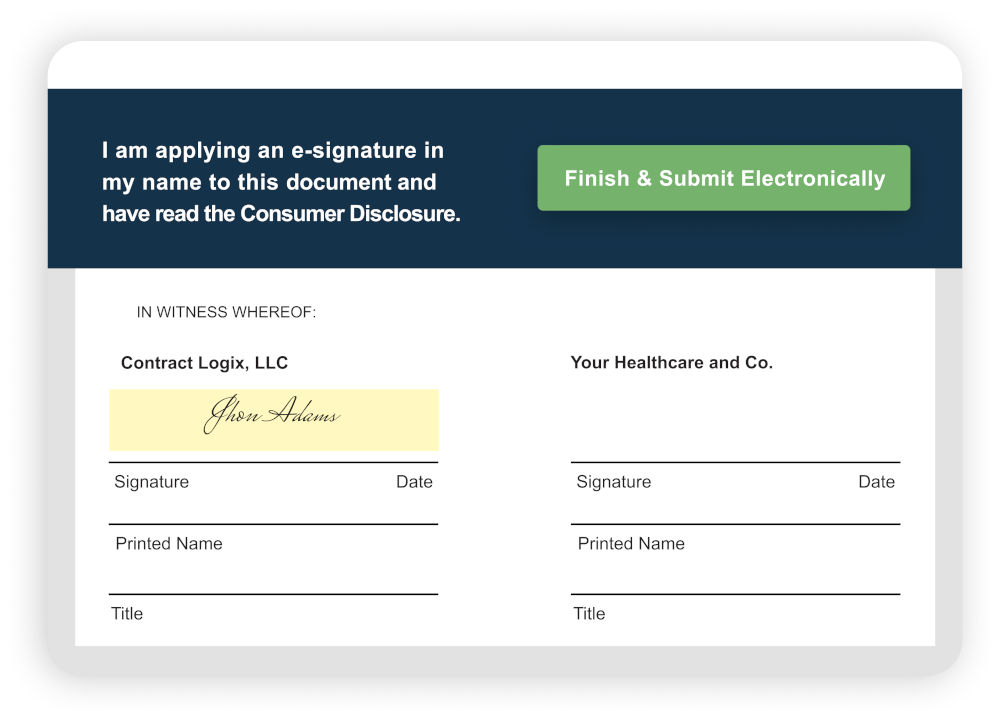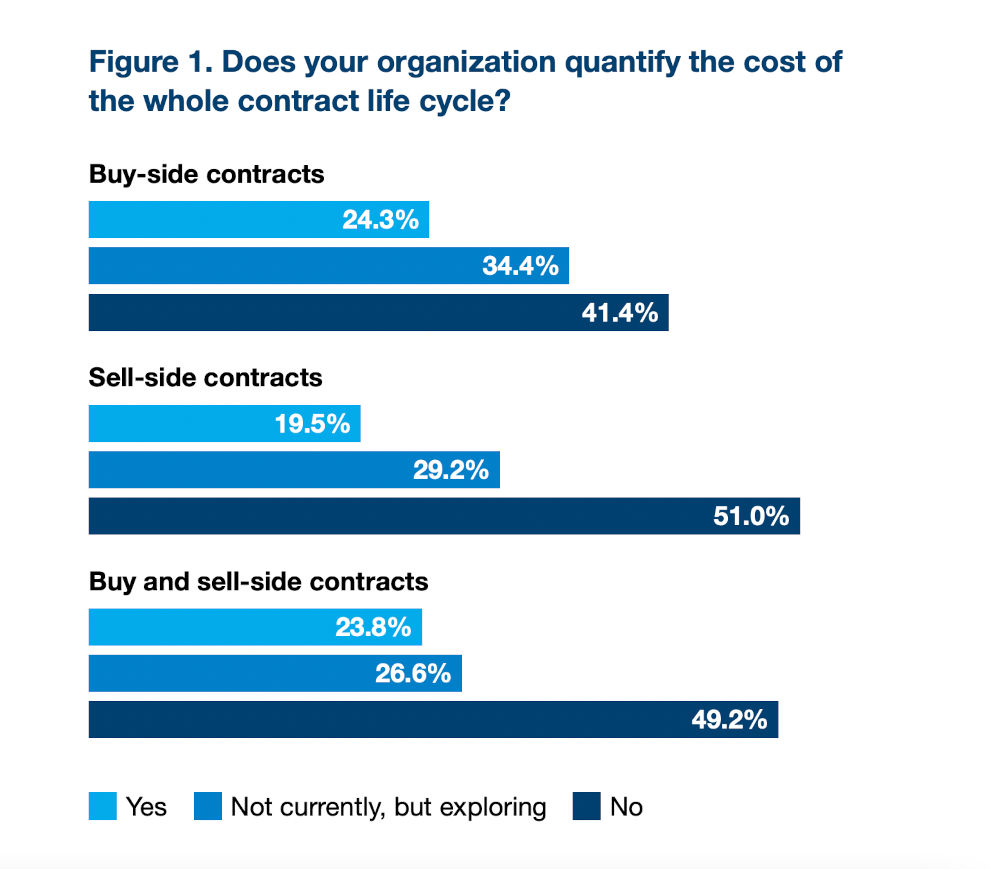Common Pitfalls in Contract Lifecycle Management
Oct 31st, 2024
Effective contract lifecycle management (CLM) is essential for organizations looking to streamline operations, mitigate risk, and maintain compliance. However, many businesses encounter common pitfalls that can disrupt this process, leading to inefficiencies, increased risk, and missed opportunities.
By understanding these challenges and addressing them proactively, companies can ensure that their contract lifecycle is optimized, aligning cross-departmental teams, including legal, procurement, finance, operations, and more.
Quick Takeaways
- A lack of centralized contract storage leads to inefficiencies, but CLM software ensures secure, easy access to all contracts.
- Using standardized clause and template libraries reduces legal risk and speeds up the contract drafting process.
- Integrating E-Signature capabilities streamlines approvals, preventing delays and lost documents.
- Comprehensive audit trails and automated obligation tracking in CLM systems enhance compliance and reduce risk.
👀 PS: Learn how to navigate CLM success with our guide on the”10 Do’s and Don’ts of Contract Lifecycle Management” here.
1. Lack of Centralized Contract Storage
One of the most common pitfalls of contract lifecycle management is the lack of a modern, cloud-based centralized contract repository.
Storing contracts in multiple locations or systems creates confusion, increases the risk of lost documents, and makes it difficult for authorized parties to access important agreements when needed. Without centralized storage, internal teams such as legal, procurement, and finance can struggle to maintain visibility over critical terms and obligations.
Solution: Integrating contract lifecycle management software provides a single, secure location for all contracts. This ensures easy access for authorized users, improves document security, and streamlines the contract retrieval process, helping businesses avoid unnecessary delays and risk.
2. Failure to Utilize Clause and Template Libraries
Many organizations still rely on manual drafting for contracts, leading to inconsistent terms and increased legal risk.
The absence of pre-approved clause and template libraries often leads to delays in contract creation, and internal teams or parties can face legal discrepancies due to inconsistent language. These inconsistencies complicate negotiations and increase the chances of disputes or breaches.
Solution: Leveraging CLM software with pre-approved clause and template libraries ensures consistency across all contracts. By using standardized language, companies can speed up the drafting process, reduce legal risk, and ensure that every contract aligns with their compliance and operational standards.
3. Not Integrating E-Signature Solutions
Another critical pitfall of contract lifecycle management is the failure to integrate E-Signature capabilities.
Relying on manual signing processes often causes significant delays, slowing down business transactions, and increasing the risk of errors or lost documents. Such delays disrupt workflows and strain relationships with vendors, buyers, and suppliers.
Solution: Incorporating E-Signature technology within CLM software ensures fast, secure, and auditable signatures.

E-Signature integration not only expedites the approval process but also allows for seamless coordination between stakeholders, enabling contracts to be executed quickly and efficiently.
4. Absence of Automated Audit Trails and Tracking Obligations
The lack of automated and detailed audit trails in contract lifecycle management poses a significant risk to businesses, especially when it comes to compliance and risk management.
Without a detailed history of changes, approvals, and signatures, it becomes challenging to track who made contract modifications and when. Additionally, missing key obligations such as dates, tasks, and compliance requirements can result in costly penalties or breached terms.
Solution: A robust CLM system automatically logs all actions taken on a contract, creating a comprehensive audit trail. This transparency not only aids in compliance but also provides visibility into contract performance, ensuring that all obligations are properly tracked and met.
5. Manual Processes and Collaboration Issues
Relying on manual processes for contract management is a major pitfall that can lead to inefficiencies, delays, and errors.
Whether it’s manually routing contracts for approval or negotiating terms through email, manual processes make collaboration more difficult and time-consuming. This can result in missed opportunities, increased risk of non-compliance, and frustration for both internal teams and external parties like buyers and suppliers.
Solution: CLM software automates contract workflows, allowing for streamlined collaboration between stakeholders. Automated processes ensure contracts are routed to the right people at the right time, reducing delays and minimizing errors. This automation fosters more effective negotiation, review, and approval cycles, improving overall efficiency.
6. Weak Approval Processes and Poor Access Control
Another common issue in contract lifecycle management is the absence of strong approval processes and secure access control.
When there are no clearly defined approval workflows, contracts can fall through the cracks, leading to unauthorized approvals or delayed executions. Additionally, giving the wrong individuals access to sensitive contract information poses significant security risk, especially in industries where confidentiality is critical.
Solution: CLM systems enable businesses to create structured approval workflows and establish role-based access controls. This ensures that only authorized personnel have access to specific contracts and that the approval process is streamlined, reducing the likelihood of security breaches and delays in execution.
7. Lack of KPI Tracking and Benchmarking
One of the most overlooked aspects of contract lifecycle management is the failure to measure and track key performance indicators (KPIs) related to contracts. Without proper benchmarking, organizations cannot accurately assess contract efficiency, performance, or compliance.
A recent report found that only around 20% of businesses actively monitor the costs or benefits of their contract management practices.

This lack of monitoring valuable KPIs prevents companies from realizing the full potential of their contracts and identifying areas for improvement.
Solution: CLM software offers analytics and reporting features that help businesses track KPIs such as contract cycle times, compliance rates, and vendor performance. By monitoring these metrics, businesses can identify areas for improvement, optimize contract processes, and enhance overall efficiency.
📈Get the guide, Contract Management KPIs for Optimization, to learn the top 10 KPIs successful organizations are measuring to gain valuable insights.
8. Failure to Track Key Dates, Tasks, and Obligations
Failing to track critical contract milestones, such as key dates and compliance obligations, can result in costly consequences for businesses.
Missed deadlines, overlooked renewal dates, or failure to meet compliance requirements can lead to penalties, lost opportunities, or breaches of contract. This pitfall can strain relationships with vendors, buyers, and suppliers, and expose the business to unnecessary risk.
Solution: A reliable CLM system provides automated alerts and notifications for important dates and tasks, ensuring that no deadline is missed. By tracking obligations and key milestones, businesses can stay on top of their contractual responsibilities, avoid penalties, and maintain healthy relationships with all parties involved.
Explore Smarter Contract Lifecycle Management with Contract Logix
By addressing these common pitfalls of contract lifecycle management, businesses can streamline their processes, reduce risk, and ensure compliance. Integrating a robust CLM system helps track key dates, secure approvals, and automate workflows, benefiting all stakeholders, including legal, procurement, finance, and operations teams.
Explore how Contract Logix can help your business avoid common pitfalls of contract lifecycle management and improve efficiency, security, and compliance. Discuss your specific needs with our team or request a personalized demo today.
Navigate CLM Success With Contract Logix
Download our Data Extraction Product Brief to learn how you can begin to navigate CLM success by automating the hard work using artificial intelligence with one of the best Contract Management Software’s on the market today


